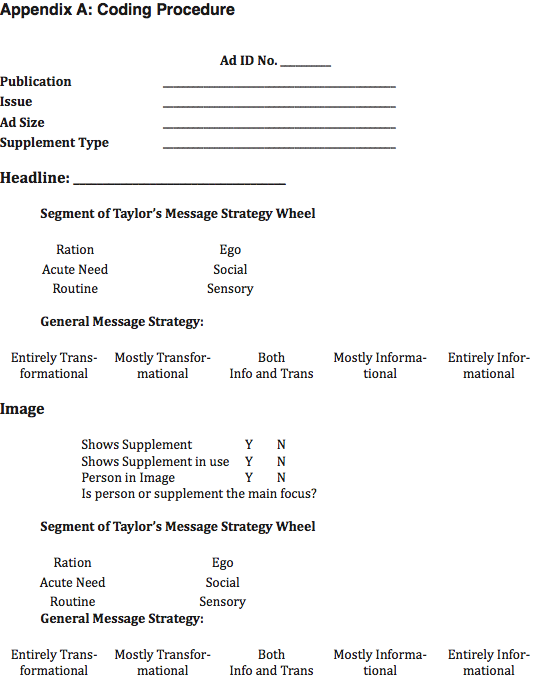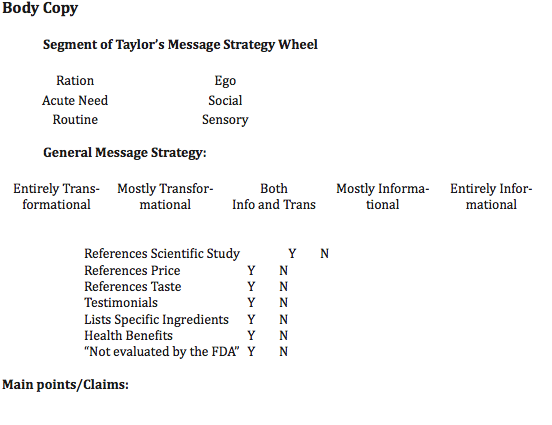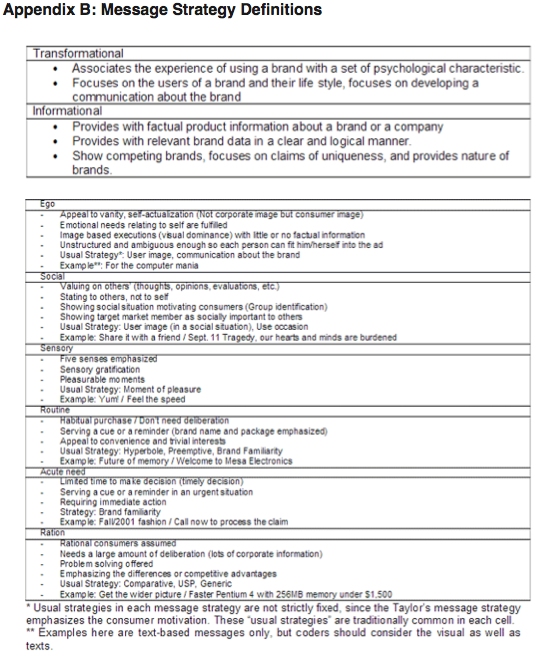From Elon Journal of Undergraduate Research in Communications VOL. 4 NO. 1Pumping Steel and Sex Appeal: Message Strategies and Content in Dietary Supplement AdvertisementsV. ConclusionThe rapidly growing dietary supplement industry has brought on fierce controversy over safety and regulation in recent years. The FDA has a specific category for dietary supplements that allows manufacturers of these products to market them without the FDA testing or approval required of drugs and medications, so these supplements can be said to exist in a regulatory gray area as neither a food nor a drug. The regulations in place require manufacturers to disclose their ingredients and provide an adequate amount of documentation to support and substantiate any major claims made of health benefits, but the qualifications for what claims require substantiation is somewhat loose and subjective, leaving gaps in the system that prevent consumers from fully understanding products. The FDA's regulations apply mostly to product labeling, while regulation of the advertising for dietary supplements falls to the Federal Trade Commission. The FTC guidelines focus on truth in advertising more than whether the product is safe, creating opportunities for DS advertisers to manipulate the information. As long as DS advertisements make no false claims, the FTC has little restriction, but there are no guidelines on how much information about the product should be given to the consumer in an ad. Due to the lack of required information or detail about a product's contents or safety, this study investigated the message strategies and informative content present in dietary supplement advertisements in fitness magazines. Using Taylor's Six-Segment Message Strategy Wheel, the research found that DS ads lean more to a transformational message strategy, most often with an appeal to the consumers' sense of self fulfillment, in the headlines and especially images. Only the body copy of ads balanced the transformational appeals with what Taylor calls Ration appeals, which focus more on showing why this product is the rational choice over other options. Through the stronger presence of transformational appeals, it is clear advertisers try sell their supplements based on a better body image to consumers over any actual health benefits. Evaluating the information present in DS ads revealed a strong disregard for informing consumers about the product, especially in pre-workout and weight loss supplements, which are controversial due to potential health risks. Less than a quarter of these products list any active ingredients to support the benefits they claim on their ads. The transformational message strategies, such as pictures of extremely muscular men, link the claims to impressions of effectiveness when in reality there are no substantial reasons to believe most of the claims made in DS ads. Even in the body copy of the ads, where rational appeals are more common, there is a distinct lack of information with any substance. The Ration appeals consist mainly of promotions of taste over competitors and vague assertions that the product will "increase performance and workout intensity." Some products rely on testimonials and quotes as evidence of the product efficacy but these can be misleading to consumers as the results shown in these testimonials are not typical of average users. Thirdparty scientific studies are another way advertisers garner credibility for their products, but only 17% of the ads made reference to them. The results in this study somewhat echo the findings in Main et al. (2004). In that study, 56.5% of DS ads were found to use emotional appeals that evoke an affective response to influence customer behavior, with only 43.5% of ads featuring a rational appeal in either the headline or visual. The emotional and rational appeals in that study are comparable to transformational and informational appeals in this research, which found only 55% of ads contain an informational appeal in either headlines or images. The body copy data in this study, which was not present in Main's study, slightly contradicts those statistics with 82% containing an informational appeal, but given prominence of headlines and visuals over body copy, the latter has less bearing on the ad as a whole. Ultimately, this research revealsed a strong imbalance between information and persuasion. These supplements are sold with promises of improving various aspects of people's lives with little proof to their efficacy and no information about what users would be putting into their body and the adverse effects it may have on them. FTC regulations on advertising do not put enough emphasis on requiring manufacturers and advertisers to provide adequate information about a product and its ingredients for consumers to make an informed and safe decision. Limitations and Future Research The biggest limitation of this study is the limited number of ads in the sample. With only one researcher and a short period of time for coding, it was infeasible to increase the sample size to more than 82 ads. Expanding the sample size would provide much more accurate measurements of message strategies, reveal trends on a broader scale, and more completely fill the research gap mentioned earlier from DeLorme et al. (2012). Another limitation is the lack of an intercoder reliability measure. The coding scheme constructed for this research can serve as a baseline for future research in this field, but requires some adjustment. For use with multiple coders, a detailed definition of some words may be needed for high intercoder reliability. AcknowledgmentsThe author would like to show his appreciation for Dr. Glenn Scott at Elon University for his guidance, inspiration and advice throughout this study. It is only with his continued support that this article could be published. The author is also thankful to Professor Byung Lee of Elon University for his supervision and help of revision for this article. ReferencesBailey, R. L., Gahche, J. J., Lentino, C. V., Dwyer, J. T., Engel, J. S., Thomas, P. R., . . . Picciano, M. F. (2011). Dietary supplement use in the united states, 2003-2006(1). The Journal of Nutrition, 141(2), 261-6. Blendon, R.J., DesRoches, C.M., Benson, J.M., Brodie, M. & Altman, D.E. (2001). Americans' views on the use and regulation of dietary supplements. Archives of Internal Medicine, 161, 805-810. DeLorme, D. E., Huh, J., Reid, L. N., & An, S. (2012). Dietary supplement advertising in the US. International Journal Of Advertising, 31(3), 547-577. FDA (2010). Dietary Supplements. Retrieved from: http://www.fda.gov/food/dietarysupplements/default.htm Hsieh, H., & Shannon, S.E. (2005) Three Approaches to Content Analysis. Qualitative Health Research,15(9), 1277-1288. Hwang, J., McMillan, S.J., & Lee, G. (2003). Corporate web sites as advertising: An analysis of function, audiences, and message strategy. Journal of Interactive Advertising, 3(2). Main, K. J., Argo, J. J., & Huhmann, B. A. (2004). Pharmaceutical advertising in the USA: information or influence? International Journal Of Advertising, 23(1), 119-142. Puto, C. P., & Wells, W. D. (n.d). Informational and transformational advertising: The differential effects of time. Advances in Consumer Research, 11(1), 638-643. Rotfield, Herbert J. and Parsons, Ratrick R. (1989) Self-regulation and magazine advertising. Journal of Advertising , 18(4), 33-40. Taylor, R. E. (1999). A six-segment message strategy wheel. Journal of Advertising Research, 39(6), 7-17. US FTC. (1998). Dietary Supplents: An Advertising Guide for Industry. Washington DC: U.S. Government Printing Office. Villafranco, John E.; Lustigman, Andrew B. (2007). Regulation of dietary supplement advertising: Current claims of interest to the federal trade commission, food and drug administration and national advertising division. Food and Drug Law Journal, 62(4) 709-725. White, Marilyn Doman, & Marsh, Emily E. (2006). Content Analysis: A Flexible Methodology. Library Trends, 55(1), 22-45. Williams, Christa. (2004). Fitness, beauty, health, and money. Journal of Exercise Physiology, 2(8).
Suggested Reading from Inquiries Journal
Inquiries Journal provides undergraduate and graduate students around the world a platform for the wide dissemination of academic work over a range of core disciplines. Representing the work of students from hundreds of institutions around the globe, Inquiries Journal's large database of academic articles is completely free. Learn more | Blog | Submit Latest in Business & Communications |























